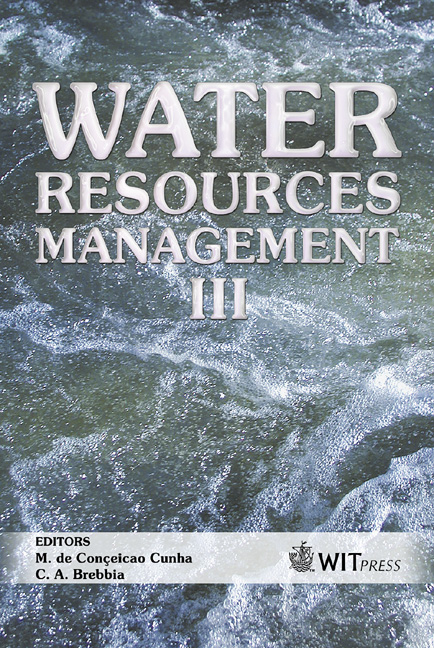Variability Of Soil Chemistry Following Irrigation With Recycled Municipal Effluent: A Great Western Vineyard Case Study
Price
Free (open access)
Transaction
Volume
80
Pages
10
Published
2005
Size
423 kb
Paper DOI
10.2495/WRM050651
Copyright
WIT Press
Author(s)
P. M. Maher, K. M. Hermon, G. Allinson, F. Stagnitti & R. Armstrong
Abstract
In areas of Australia where viticultural operations have been limited by lack of an acceptable irrigation water source, considerable expansion has occurred through the use of recycled wastewater. Despite this rapid expansion, little is known of the potential impacts of the water’s chemical constituents on soil properties, or the long-term sustainability of the vineyards using the water. In order to establish the impacts of drip irrigated recycled wastewater on a vineyard in Great Western, Australia, a study comparing the soils from the vineyard inter-row and row area was undertaken. Chemical and physical properties of the soil with varying distances from the drip emitter were also investigated. During the irrigation season, significant differences between the inter-row and row area were found for several chemical parameters including pH(1:5soil/water) (P<0.001), electrical conductivity (EC1:5) (P<0.001), water-soluble sodium (WS Na+) (P<0.001), and water-soluble chloride (WS Cl-) (P<0.001). This paper will discuss differences observed between soil properties of the inter-row and vine row area, as well as the spatial distribution of solutes under the drip emitter. Keywords: wastewater irrigation, soil solute distribution, vineyard sustainability, irrigation management. 1 Introduction Grape production in Australia is increasingly becoming a significant part of the agricultural sector. Rapid growth of the industry in recent years has seen theKeywords
wastewater irrigation, soil solute distribution, vineyard sustainability, irrigation management.





